Cod are arguably the UK sea angler’s favourite fish! It’s common knowledge their numbers are not what they once were, but there are still good cod to be caught by shore anglers. Those that make the most of these opportunities keep their eyes on social media and forum boards for the very latest catch returns and fish when the fish are there and being caught. Predicting the movements of cod in current times by working the older marks that were traditionally fished is a strategy less likely to bring success.
Shore cod average between 2 and 4lbs, maybe a little bigger if you’re fishing the Northeast rock scars, but there’s always the chance of bigger fish over 10lbs.
Cod Fishing Season
Around the Scottish coast, off the Northeast of England and North Yorkshire, cod can be caught throughout the year with lulls in the spring period. South of the Scottish border, generally speaking, the cod season starts in late September and continues into early February. However, after the Christmas period, you can expect overall numbers to quickly thin out. That said, January and February can be months that see a few bigger cod move inshore before going deeper to spawn.
Areas that stand out during this autumn into winter period would be the Holderness coast of east Yorkshire, Dungeness, Chesil Beach, both sides of the Bristol Channel and the Mersey Estuary marks. These give you the very best chance if you can concentrate your efforts here.
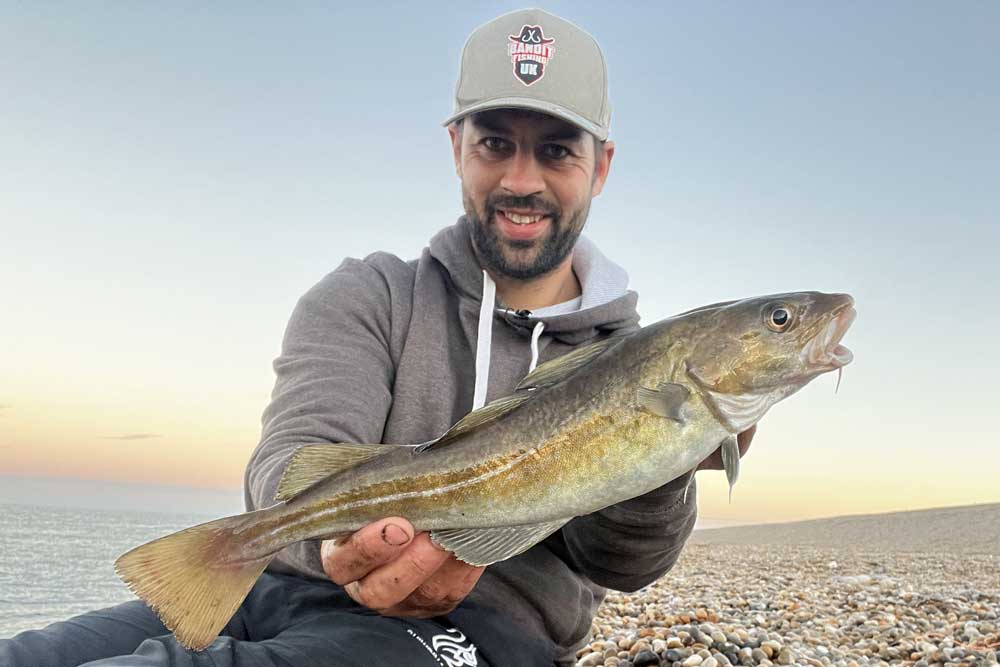
Cod Habitat
Cod are a versatile fish and are at home on shallow surf beaches, mixed rough ground and heavy rough ground in deeper water.
On the shallower venues they target gutters and gullies running along the length of the beach but concentrate best where patches of rough ground or reef are as this holds much more food. They also favour clay or sandy banks and areas where depressions are formed.
If a beach only has feature from the low water line, then this is when that beach will fish best. A few fish may work the surf over sand as the tide floods, but most fish will stay in the rough.
In heavier ground, look for channels that cut in from deeper water or areas where bigger boulders are evident among a generally less dramatic seabed. They also seek kelp weed beds and will be found feeding over mussel beds.
On deeper steep-to beaches, try to find the demarcation line where the seabed starts to rise upwards towards the shingle line. This can be a hotspot on an otherwise featureless beach. Also, fish anywhere where the shingle sticks out as a finger to break the tide flow and fish on the down tide side of this. It’s where food will collect, and the fish will work this area fully.
Weather and Tides
Cod like a rough sea with a good surf or swell. Onshore winds between Force 3 and 6 tend to give a good surf and generate enough water movement to bring the fish in. The best conditions are when you track a deep low-pressure system in off the Atlantic that blows for a few days, then passes through. As the wind drops, but the sea state is high, this is the best time to fish. You may also get a tide to fish when the eye of the gale passes over, as the wind will briefly drop before swinging direction.
Night tides give the best results, but a coloured sea in deeper water may produce in daylight, though results are rarely ever as good as at night.
Cod like to feel the tide, so the bigger spring tides and especially tides getting bigger every day are the ones to target. Once the tides go over the high cycle and start to get smaller then expect catches to follow suit. In most areas, the middle hours of the flooding tide tend to be best. They can be caught at low and high-water slack, but this is not a time to expect multiple bites. If there is feature such as reef or rough ground on the venue you fish, then this can fish well on the ebbing tide too, but again it tends to be the middle hours when there is some tide flow that will produce.
As with so many mostly night feeders, picking tides that start to flood in the dark with high water also in dark fish the best.
Shore Cod Fishing Tackle
With rough seas and heavy ground to contend with, plus the need to cast to long range, rods in the 6-8oz bracket (up to 200g) with a length of 13’6” or longer give the power and increased lead speed to gain the extra yards. The length also minimises weed contact in the surf by keeping the line higher when in the rod rest, and helps steer fish through heavy surf and over snags. Rods such as the Tronixpro Xenon Power, Xenon C-6 MX are ideal for this type of fishing as well as our top end Competition Naga rod.
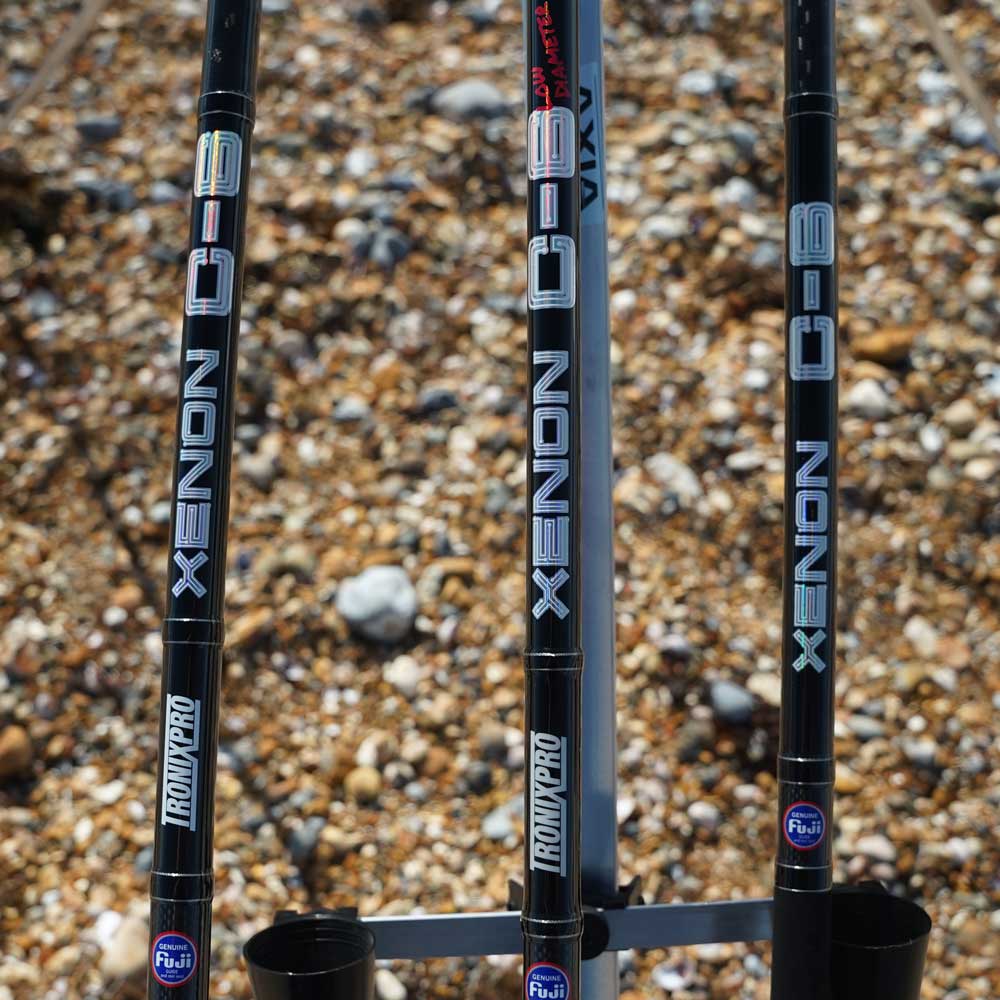
For beach fishing a 6500 sized multiplier, such as the Guerilla Mono Mag loaded with 18lb line and a 60 to 80lb mono shock leader will handle all conditions. We use a combination of Tronixpro Blaze with our Xenon Shockleader.
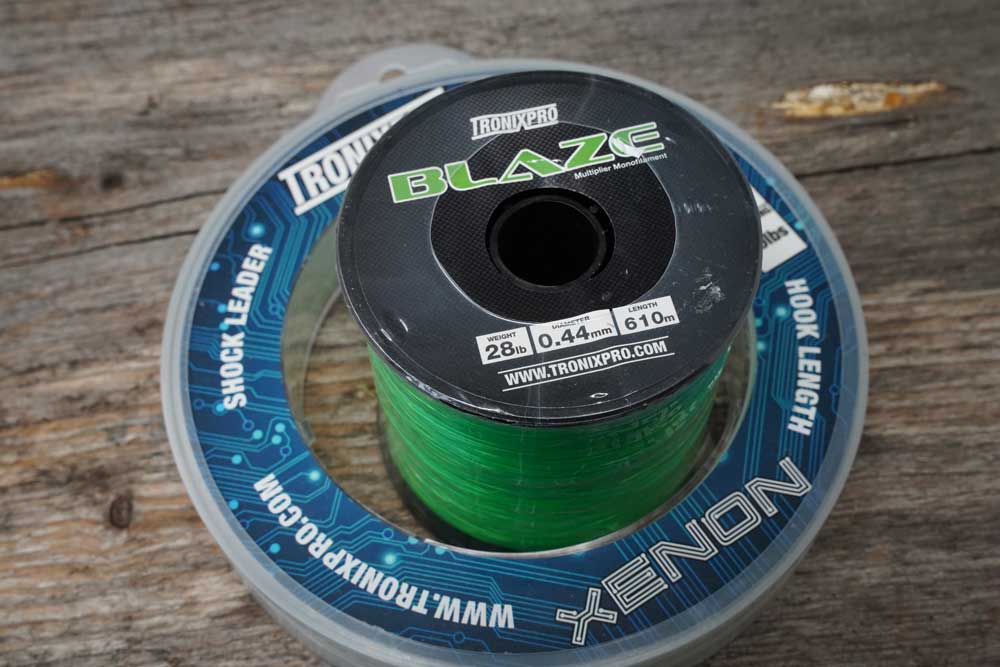
If you’re fishing into very rough ground, then more experienced anglers have found that a fixed spool reel, such as the Tronixpro DV8, with its faster retrieve ratio and direct power can drag fish through heavy ground more successfully. Load these reels with 40lb Tronixpro X8 Braid (some use heavier) and dispense with a shock leader for close to medium range casting, providing it is safe to do so. Line capacity needs to be in the region of 350m of 0.35mm line. When using braid, use 300yds of 30lb braid for general fishing, with mono backing as required. An 80lb braid leader is added to the mainline to take casting pressures.
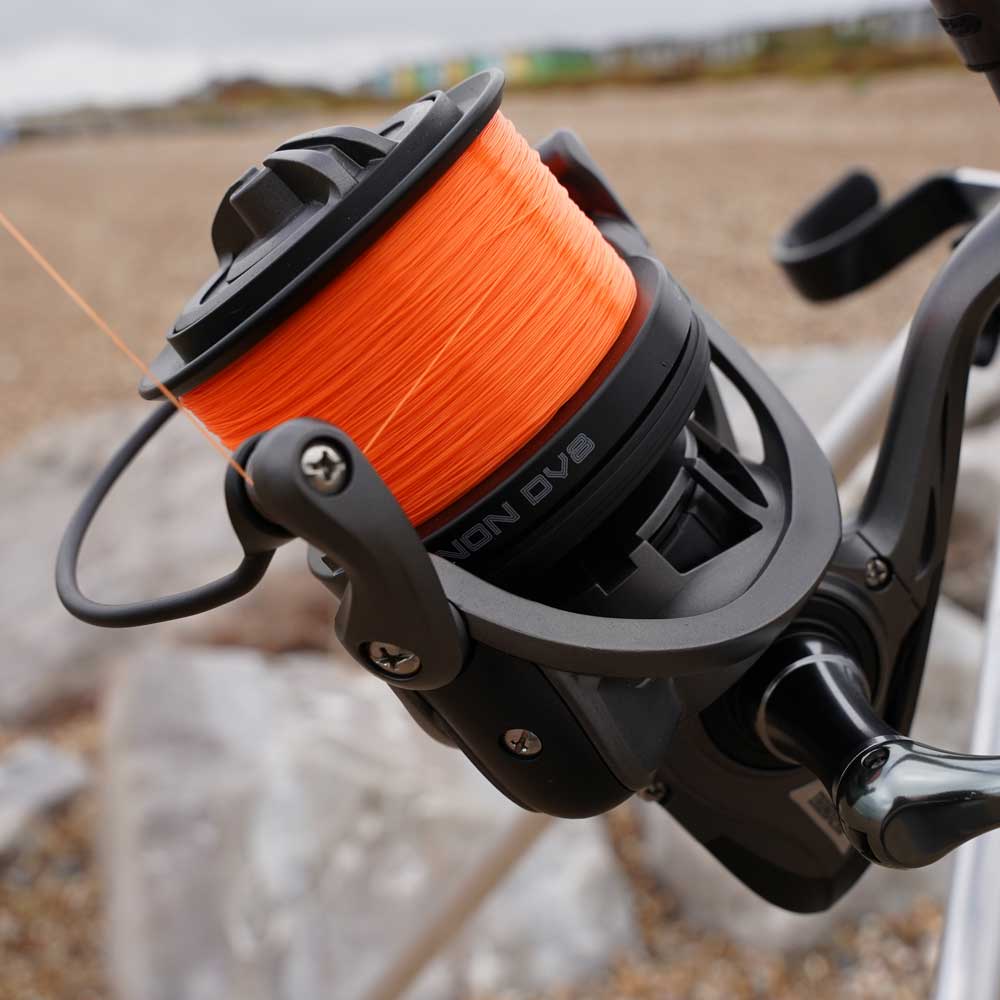
The pulley rig will cover virtually all cod fishing situations off the shore. Begin with 50-inches of 60lb to 80lb clear mono. To one end tie on a Tronixpro Big Bait Casting Snap, slide on a 5mm bead, a Tronixpro Pulley Rig Bead and another 5mm bead. Measuring up from the tag end of mono 22-inches, tie in a figure-of-eight knot. This stops the beads and pulley rig bead sliding any further. On to the tag end of mono, slide on a rig crimp, a 3mm bead and an 8mm bead, then the hook. Crimp the crimp lightly in place on the mono, just enough that under heavy finger pressure you can slide it on the line. This bead arrangement acts as a bait stop and avoids the bait blowing back up the line during the cast.
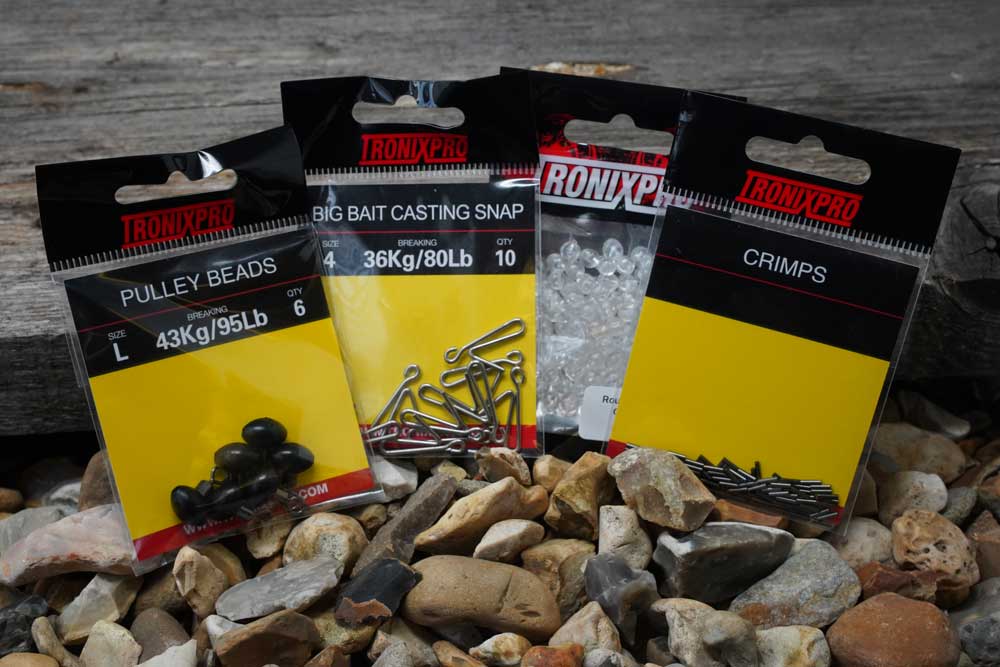
Hooks need to be strong but not overly heavy like the Tronixpro Beast Uptide hooks in size 4/0. Most anglers like to use two hooks positioned one above the other, with the top hook held in place by passing the line through the eye and tying on the lower hook. To position the top hook after baiting up, slide the hook down and wrap the line around the hook shank three or four times, then push the hook point into the top of the bait and out the other side. This is the best presentation for a big worm bait or squid bait.
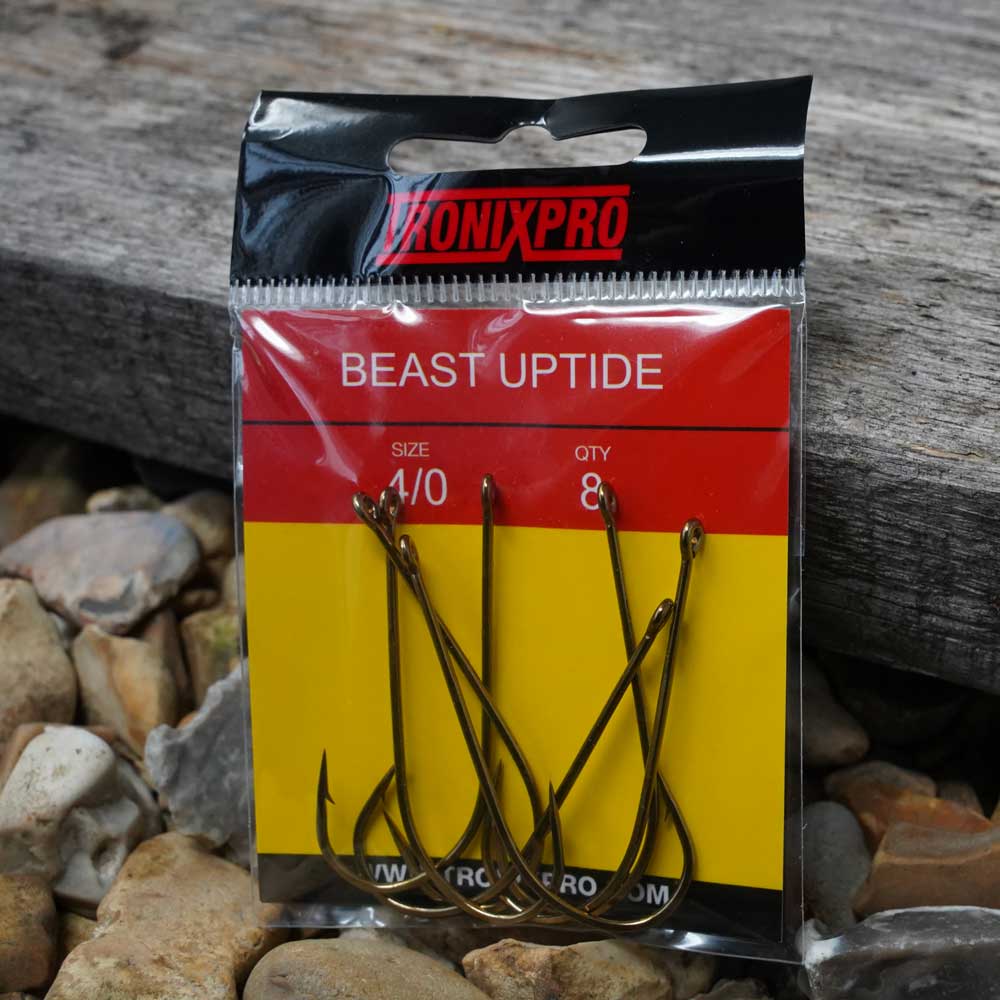
In very rough ground, the top hook can increase the likelihood of snagging. In this case, it’s wiser to use a single bigger hook, say a size 6/0 and bait up accordingly just filling the hook. This works best with crab and mussel baits.
Top Baits
Top bait for shore cod is black or blow lug. Mixing the two with a whole black above a couple of blow lug gives maximum scent and encourages the cod to take at the hook point. Worm works throughout the year too.
In the rough ground, mussel is an excellent bait, but needs lots of bait elastic to keep it secure during a powerful cast. In the spring, and summer, peeler or soft crab is excellent when fished into rough ground.
A top bait for bigger cod is a whole squid or two or three smaller squid on the pennel rig. Bind the whole lot up with Tronixpro Baitex until you have a large sausage shape with the hook points well exposed.
Tipping worm baits with a sliver of squid adds scent, movement, and colour. Also try tipping worm baits with crab, mussel, queen cockle and razorfish, the latter three working especially well after a very rough sea has displaced a lot of shellfish from the rocks and sand.
Tactics
Be prepared to cast as far as you can, especially if there is recognised feature to fish to such as gutters, reef or rough ground. Cod will run the surf like bass, but tend to be further out and will concentrate where there is feature. One way to increase casting distance is to wear chest waders and wade out thigh deep in the surf, but only do this where it’s safe to do so and when you are fishing in close by company. A big fixed spool reel loaded with 30lb braid, and a shock leader also helps you maximise distance if your casting skills still need honing.
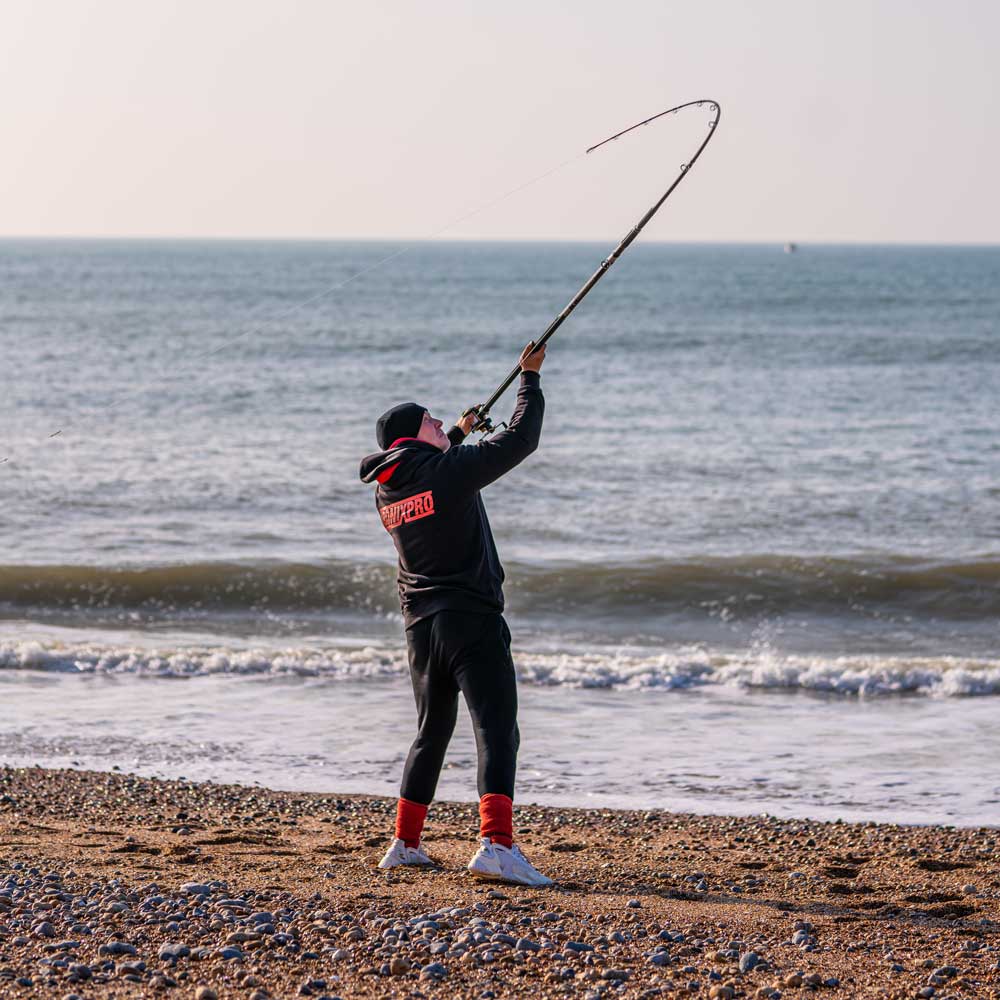
Fish two rods at different ranges if the sea conditions allow. However, in rough seas where weed may be present, you’ll be more efficient if you use just one rod and concentrate on this exclusively. All the rods in the Tronixpro range have highly reflective tips, which help you see bites in the driving wind and rain. If your rods don’t have any reflective tips, adding reflective tape, such as Mighty Bright, will help massively in harsh conditions.
A good solid rod rest is required, but carry a carrier bag or mesh bag and fill this with a few pebbles and hang it on the rod rest to add weight and stability in high winds.
Change baits every 15-minutes or so. In rougher seas, the scent from the bait quickly washes out and cod will only chase up a strong scent trail. Having a pre-baited second rig ready so that when you retrieve, you instantly replace the fished rig with the ready baited rig can save masses of fishing time and catch you more fish.


